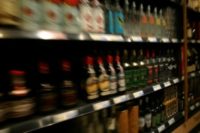Since rolling out in 2006, the micro-blogging service has become the online equivalent of a massive global square.
Twitter now has more than 200 million active users creating more than 400 million tweets each day, according to Twitter’s blog.
For PR pros Twitter is like oxygen. It’s a way to breathe life into new PR campaigns, cultivate relationships with media reps, stakeholders and consumers and handle crises with more alacrity.
Indeed, for communicators and, in particular, younger PR pros it may be hard to imagine executing a PR campaign without Twitter playing a central role.
It’s also affected how PR folks craft their messages. As George Stenitzer, VP of marketing and corporate communications at B2B company Tellabs, put it: “Twitter is the world's ultimate headline writing contest. It teaches brevity. Good tweets equals seven to capture attention, 70 characters to maximize retweets.”
Here are a few other ways on how Twitter has impacted PR and communications (think how Twister has impacted, or could impact, your safety and health workplace program:
- It's enabled PR pros (or safety pros) to take a real-time temperature of their audiences, enabling on-point messaging.
- Twitter has changed the face of customer service and how brands need to respond in a virtual nanosecond to consumer (or safety-related) complaints (read: the Alec Baldwin episode on American Airlines, when the actor got tossed off a flight because he was playing Words With Friends and, via a series of tweets, subsequently skewered the airline’s bedside manner.)
- Twitter allows communicators (including safety and health pros) to cleverly leverage pop culture (think the Jell-O campaign that referenced the Mayan end-of-days prediction; we should have been toast on December 21, according to the Mayan calendar).
- Promoted tweets allows for hyper-localization of content, enabling PR pros (and safety and health pros) to reach people who otherwise would not be aware of their messages.
- Twitter lets your workforce become your biggest brand champions (and biggest safety champions), giving your employees a chance to evangelize about our brand’s attributes.
And what might the Twitterverse hold in store for PR pros (and safety and health pros and their programs) in the next seven years? What do you think?


